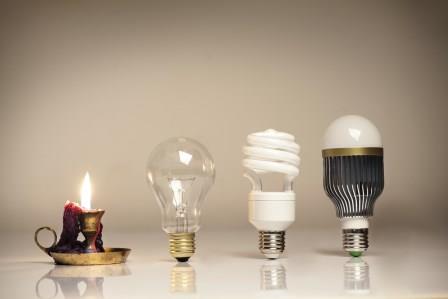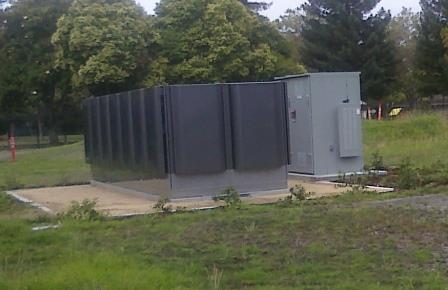

Printable PDF version
Subscribe to our newsletter
Net Zero Energy
OSHA Confined Spaces
Onward & Upward, Slowly
Construction
Management Specialists
111 Pine Street, Suite 1315
San Francisco, CA 94111
(415) 981-9430 (San Francisco office)
1663 Eureka Road
Roseville, CA 95661
(916) 742-1770 (Sacramento office)
9449 Balboa Avenue, Suite 270
San Diego, CA 92123
(619) 518-5648 (San Diego office)
8538 173rd Avenue NE
Redmond, WA 98052
(206) 571-0128 (Seattle office)
2063 Grant Road
Los Altos, CA 94024
(650) 386-1728 (South Bay office)
P.O. Box 492115
Los Angeles, CA 90049
(424) 343-2652 (Los Angeles, CA office)
www.TBDconsultants.com
One of the main features of LEED has always been the idea of energy efficiency. The push these days, however, is going beyond being an efficient consumer of energy to being a producer of it — at least satisfying your own demands for it and perhaps even supplying more energy to the grid than you take from it.
As we mentioned in a previous article, there are varying definitions for Zero Energy Buildings (ZEB, or NZEB, Net ZEB, because it is the net end result, after subtracting energy produced on site from the energy used that we are considering). Whatever definition is used, the goal is to reduce the dependence on fossil fuels and lower carbon emissions.

The first thing that has to be acknowledged is that it can be very difficult for most buildings to provide enough energy to meet traditional requirements, so the initial task is to reduce the energy needs. Well over 50% of energy ‘needs’ can be eliminated in this manner. Techniques for achieving these savings are becoming more mainstream, and include the use of LED lighting, and using high-efficiency, low-power, appliances. Sensors that can turn off lighting and appropriate appliances when a room or zone is not occupied help overcome the problem of getting users to be economic in energy usage. Designing the building to control the amount of natural lighting can reduce the need for lighting in the first place, and save even more energy.
Bringing too much light into a building can create problems, such as giving more need for cooling, so sun-shading or even reducing the amount of glass can be an advantage. The era of the big glass box might be coming to an end. Reducing the area of curtain walling can bring the goal of achieving net zero energy closer, while saving initial capital cost at the same time.
Innovative HVAC systems have always played a large part in energy reduction, with options such as utilizing solar heat gain, the thermal mass of the building, ground-source heat pumps, and variable refrigerant flow units, all having their uses.
Improved insulation, triple in lieu of double-glazing, draft stripping, and the orientation of the building in relation to the sun are other design features that can improve energy performance. The premium cost for the energy saving measures may end up in the region of 10% of the construction cost, but should pay for itself several times over in energy cost savings.
Once energy usage has been reduced as far as it can go, then comes the task of trying to provide that energy. Methods for doing so include photovoltaics, wind-powered generators, biogas, and even fuel cells.

Fuel cells convert oxygen (from the air) and hydrogen (which may be obtained from biogas or natural gas)into water, and providing heat and electrical power in the process. However, it is still a fairly expensive technology, and hasn’t seen a lot of use yet.
Biogas is a renewable resource, but burning it to power a generator can create greenhouse gasses, which is not good for the environment, so this would also not be a top choice for on-site power.
Wind-powered generators are good, non-polluting, power sources, but their use on a building can be problematic unless there is a large site where a wind-farm can be set up, and there is also the problem of birds flying into them to be considered.
That leaves photovoltaics as the main option, especially since their efficiency has been improving and their cost decreasing. The problem here stems from the fact that with high-rise, and even many medium-rise, buildings there will probably not be sufficient area for photovoltaics to provide enough power to meet the building’s needs. The roof is the primary area normally used for PVs, but the amount of roof space, compared to building floor area, becomes fairly small in high-rise buildings, and that area is often going to be reduced further by the need to reserve some of it for HVAC equipment. Sun-shading and canopies will also provide areas where PVs can be installed, and it is even possible to get glazing that incorporates PVs, but these other areas are not likely to be as effective at gathering the sun’s energy as roof-mounted PVs are. PVs can also be used effectively on canopies over on-grade parking, but again these opportunities are less likely with high-rise buildings.
The use of district-wide Net-Zero Power planning is one option for meeting power needs, taking advantage of the power-generating opportunities of lower-rise buildings and open spaces to help meet the needs of those that cannot provide enough themselves. Buildings that produce a surplus of energy are sometimes called energy-plus buildings.
Solar hot water systems are also a viable option for reducing the dependence on electrical or gas power.
Buildings will normally still have a need to be connected to the power grid, because the opportunities to provide the power at the times that power is required are not always available, and on-site power storage is expensive and problematic. So buildings would take power from the grid as needed, and feed power back into the grid during times of surplus. But as NZEBs become more common, the power utilities will end up providing less power, while needing to maintain the same distribution infrastructure and similar generating capacity. That will mean that they will need to come up with an alternative revenue method, other than simply charging for power supplied, but probably getting more of their income from a simple grid-connection charge. Having the utilities utilize more renewable-energy generating capacity, such as tidal or wave-power generation, wind farms, geothermal, and hydroelectric generation helps to further the aims behind NZEBs.
Safety on a construction site is always an issue, and here we look at one of the more recent directives from OSHA, specifically related to work in confined spaces.
In this article we take a look at some of the global and national issues that could affect the construction industry during 2016. Happy New Year!
Design consultant: Katie Levine of Vallance, Inc.